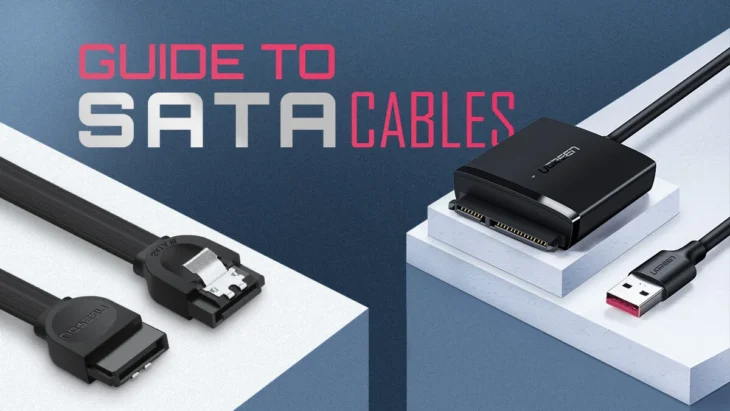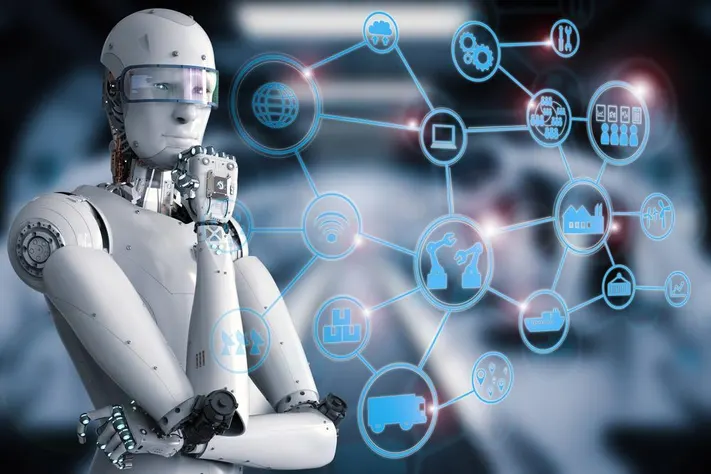Embedded systems have become an indispensable component of modern life, providing power for multiple devices and programs in our daily lives without our having to notice. They were built specifically to complete specific tasks efficiently and reliably – one key feature being microcontroller-based embedded systems which serve as their central core controller – this guide explores what microcontroller-based embedded systems are, their uses, applications architecture programming as well as potential trends within this innovative field of study.
1. An Introduction to Embedded Systems Embedded systems are specifically engineered computing systems intended to fulfill specific roles or tasks within an overall system, often implemented into automobiles, household appliances, and medical/industrial equipment. They’re ubiquitous across applications from automobiles to computers to medical equipment – anywhere they play an essential part.
Embedded systems distinguish themselves by operating seamlessly within host systems that operate undetectably from user perspectives. As opposed to general-purpose computers that can run a wide array of software programs simultaneously, embedded systems are designed specifically for performing specific functions efficiently and reliably.
2. Introduction to Microcontrollers
A microcontroller is an electronic component with its own integrated processor, memory, input/output peripherals and programming language all built-in to an IC chip. Designed to perform specific tasks for use within embedded systems. Here we take a closer look at its basic elements:
Processor Core
A microcontroller’s Central Processing Unit (CPU) executes instructions stored in memory and regulates overall system performance. Most embedded system CPUs tend to be low power devices with optimized functions designed specifically to perform specific tasks; making microcontroller processors an ideal fit.
Microcontrollers contain two forms of memory – program memory (flash or ROM), and data memory (RAM). Program memory stores the software or firmware the microcontroller executes while data memory serves as temporary storage for variables and other forms of data while programs run.
Microcontrollers come equipped with various peripherals that allow them to interact with the outside world, including input/output pins, timers, communicating interfaces (SPI/UART/I2C), special functions like pulse width modulation controllers or analog-to-digital converters (ADCs).
Microcontrollers rely on external clock sources for timing their actions and to coordinate instructions as well as internal processes. Different microcontrollers utilize either external or internal clock sources and their clock speeds can differ considerably between models.
Also Read: Hydraulic Systems: Powering Industries and Machinery
2.5: Power Management
Proper power management is crucial to embedded systems running off batteries. Many microcontrollers offer power-saving features or sleep modes designed to limit energy waste when the system is idle.
3. Components of a Microcontroller-Based Embedded System
A microcontroller-based embedded system comprises several key elements working in tandem to achieve its intended goal. Specific requirements will determine which elements make up this type of embedded system; however, typically at least some elements from below will appear across various embedded solutions:
3.1 Microcontroller Whilst at the core of any system lies its microcontroller. Responsible for carrying out program instructions as well as overseeing other components, its main duties lie with overseeing execution as well as management functions.
Sensors and Input Devices
Sensors are devices used to collect information about their surroundings from accelerometers to temperature sensors cameras buttons and touchscreens – these collect and convert physical events to electrical signals that the microcontroller can then process.
Actuators and Output Devices
Output devices and actuators play an essential part in microcontroller-enforced actions. Examples of output devices/actuators are LEDs, motors, and displays as well as speakers and relays which convert electrical signals generated by microcontroller into physical actions or data for user consumption.
Power Supply
A stable power source is critical to any embedded system’s proper operation and may take the form of batteries, adapters, or energy harvesting devices like solar panels depending on its purpose.
Communication Interfaces
Many embedded devices require communication interfaces in order to exchange information among multiple devices or to connect networks, with some of the more popular protocols being UART, SPI, I2C Ethernet as well as wireless technologies like Wi-Fi Bluetooth LoRa.
Memory Storage
Storage memory is integral for programming code, data and configuration settings to run effectively on microcontrollers, although external devices like SD cards and EEPROMs could potentially serve as replacement options if internal memories prove inadequate.
4. Programming Microcontrollers
Programming a microcontroller entails writing code which specifies its functions and behaviors – these are essential aspects of programming microcontrollers.
4.1. Integrated Development Environments (IDEs)
IDEs provide a software environment in which microcontroller programming code can be written, compiled and debugged efficiently. Common examples are Arduino The IDE MPLAB X along with Keil MDK.
Programming Languages mes Microcontrollers can be programmed using various programming languages such as C, C++, Python or Assembly depending on factors like their structure or the demands of their program. When choosing which one you use will depend heavily upon several considerations including its own characteristics as well as those unique requirements of its target application.
Also Read: Exploring HTML5 Games: Unleashing Unblocked Fun
Firmware Development
Firmware is the program which runs inside a microcontroller that dictates its communication with actuators, sensors, and other parts. Firmware development includes writing code to initiate peripherals, process inputs and generate outputs.
Real Time Operating Systems (RTOSs)
In more complex embedded platforms, real-time operating systems may be utilized to oversee tasks and schedules. By making certain that vital activities are completed on schedule, real time OSs make these applications ideal for applications that have stringent timing requirements.
Debugging and Testing Debugging tools are an indispensable way of quickly and accurately diagnosing hardware and software issues with embedded devices, from microcontroller circuit emulators (ICE), JTAG interfaces and logic analyzers – to name just some options available to debuggers.
5. Applications of Microcontroller-Based Embedded Systems Microcontroller-based embedded systems find wide application in many domains due to their versatility and efficiency, such as:
Consumer Electronics
Embedded systems form the core of consumer electronics like smartphones and smart TVs, gaming consoles and home automation systems. Microcontrollers used in these devices oversee user interface, sensors and wireless connections – they act like brains for these complex machines!
Modern cars rely heavily on embedded systems for engine management and safety features as well as infotainment features and advanced driver assistance systems (ADAS).
Industrial Automation
Robots and industrial machines feature embedded technology designed to automate production processes, monitor equipment health and enhance production efficiency.
5.4 Medical Devices Embedded systems play an essential role in medical devices like heart pumps, pacemakers and diagnostic instruments – they guarantee precise control and monitoring for accurate functioning and accurate patient diagnosis.
Home Appliances
Household appliances like refrigerators, washing machines and microwave ovens include embedded systems to increase energy efficiency and functionality while improving energy savings and functionality.
Aerospace and Defense
Embedded systems play a pivotal role in aerospace and defense industries, from missile guidance systems and UAVs (unmanned aerial vehicles) to communications equipment used by military organizations.
IoT (Internet of Things)
The IoT employs microcontroller-based embedded systems to connect and regulate an assortment of smart devices ranging from thermostats and door locks to wearable fitness trackers.
5.8 Smart Agriculture
Precision Agriculture utilizes embedded systems to perform tasks such as monitoring soil condition, controlling irrigation systems and keeping livestock under control.
6. Challenges and Considerations
Microcontroller-based embedded systems present numerous advantages; however, they also pose unique obstacles which must be managed. Designers and engineers should address them accordingly:
Microcontrollers have limited processing power, memory capacity and storage compared to computers with general-purpose capabilities; as a result, efficiently writing code and allocating resources is paramount for embedded systems.
Real-Time Constraints
Many embedded systems require real time operation, where tasks need to be accomplished within tight time constraints and deadlines. Unfortunately, this can be challenging and can present many difficulties.
Security With increasing connectivity among institutions comes increased security risks; protecting data against unauthorise access as well as breaches is becoming an increasing challenge.
Energy Efficiency
Devices powered by batteries require optimizing power usage to extend battery lifespan, meaning adopting components with lower power usage as well as developing strategies to save power. To do so successfully. This could involve components which use less electricity or creating strategies to conserve it.
Hardware Compatibility Selecting the proper microcontroller and peripherals is critical when developing any application, as ensuring compatibility and scaling should ensure future-proofing your solution.
Future Trends
Microcontroller-based embedded systems continue to advance, with various developments shaping how technologies like these will develop over the coming years:
Edge Computing
Edge computing involves processing data closer than its source, thus decreasing bandwidth and latency requirements. Microcontrollers serve as key elements in edge computing devices for real time processing of sensor data.
Microcontrollers are increasingly taking advantage of machine learning capabilities with artificial intelligence capabilities such as artificial neural networks. A popular trend, TinyML allows microcontrollers to do on-device analysis such as gesture recognition or anomaly detection to carry out on-demand analysis tasks on-device.
As 5G networks expand, microcontroller-based devices will reap the rewards of faster and more secure connectivity, opening up opportunities to create new IoT applications as well as augment existing ones.
7.4. Security Enhancements To combat growing security threats, microcontroller manufacturers are developing hardware security features like secured boot, cryptographic accelerators and secure boots to defend microcontrollers against potential attacks.
Low-Power Advancements Recent advancements in low-power microcontroller designs will propel innovations in energy harvesting and battery powered applications.
Conclusion
Microcontroller-based embedded systems are unsung heroes behind many devices and technologies that we rely on daily, such as smartphones. Their small size, effectiveness and scalability play key roles across a range of applications; as technology progresses they will play an increasingly vital role shaping next-gen embedded system development to create smarter, integrated devices – an understanding of microcontroller-based embedded systems opens doors of innovation and opportunity!





















You must be logged in to post a comment.